






in the foothills of the Ozark Mountains in Missouri, High Adventure Ranch offers all of the excitement of western big game hunting without the costs and hassles.




Be prepared for a fair chase hunt! With over 3 square miles of prime natural habitat, our ranch provides challenges to even the most seasoned hunter, but our experienced guides and “No Game, No Pay” policy practically ensure that you won’t go home empty handed. In addition, High Adventure’s hunting season is year-round, allowing ample time to fit the most demanding schedule.
While our whitetail, elk, wild boar and red stag hunts top our hunter’s most popular lists, hunters from around the world have visited our ranch, hunting everything from American bison, black buck, fallow deer to Spanish goats and African game.
So, whether you desire a 10-point whitetail mount for


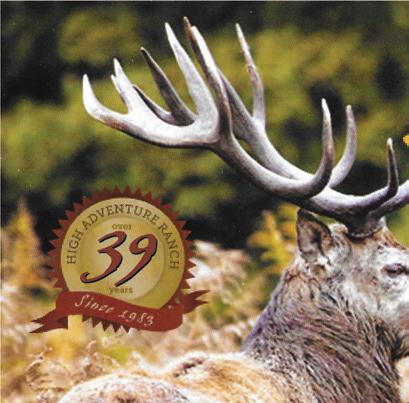
trophy room or simply the thrill and challenge of



down
of our many elusive big game animals,



un-





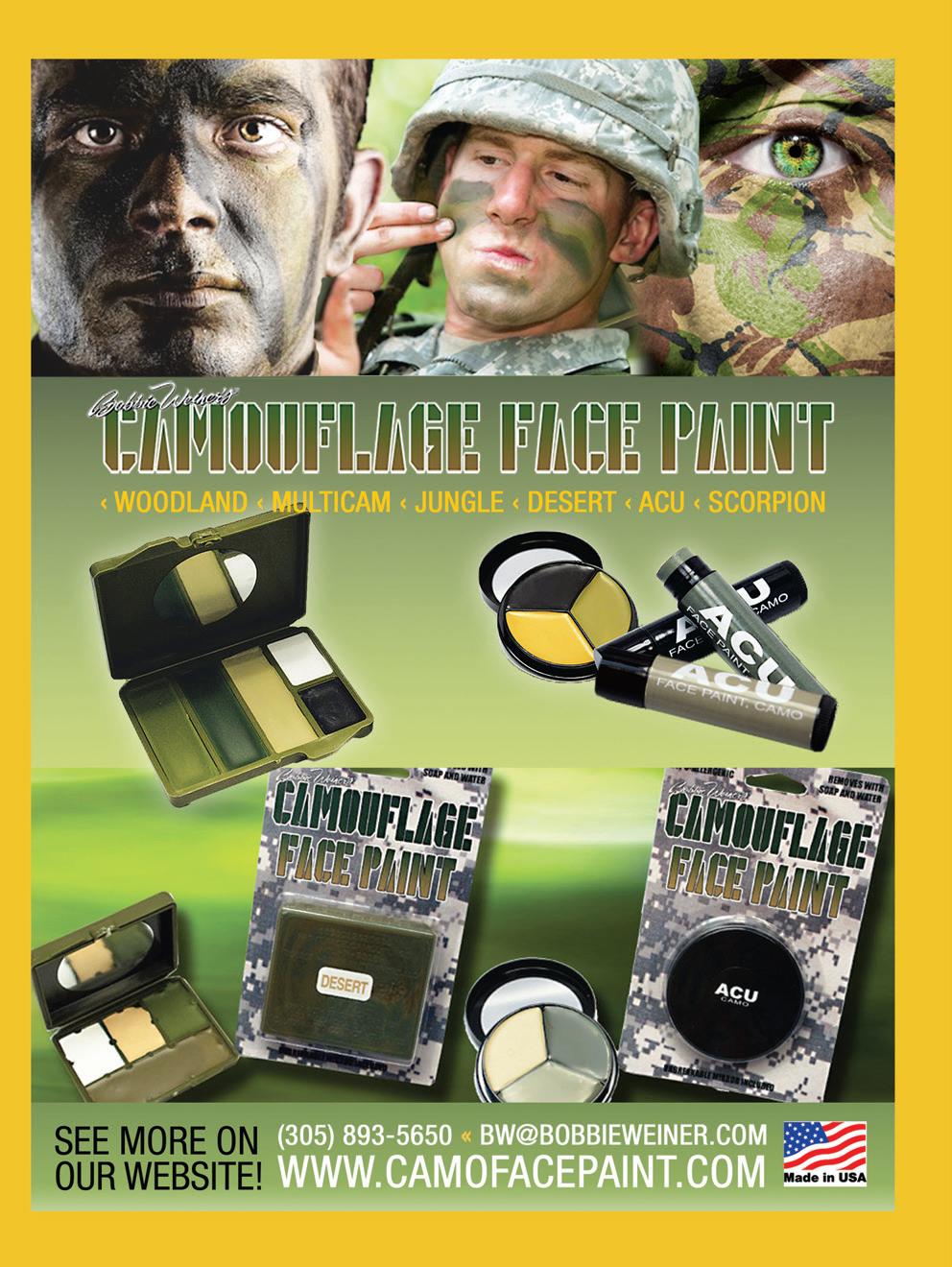
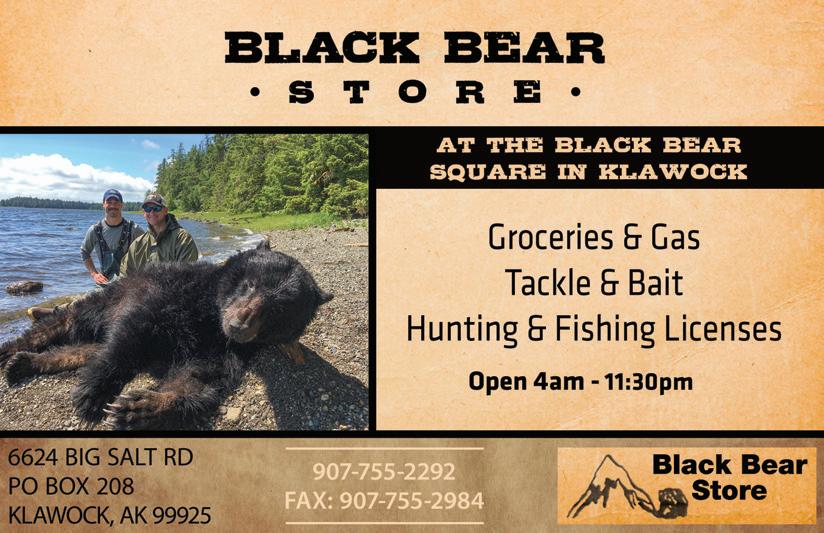


PUBLISHER
James R. BakerGENERAL MANAGER
John Rusnak
EDITOR-IN-CHIEF
Andy Walgamott
OFFICE MANAGER / COPY EDITOR
Katie Aumann
COPY EDITOR
Alyssa Stout
LEAD CONTRIBUTOR
Frank Jardim
CONTRIBUTORS
Jason Brooks, Larry Case, Scott Haugen, Phil Massaro, Mike Nesbitt, Paul Pawela, Nick Perna, Troy Rodakowski, Shawn Vincent
SALES MANAGER
Paul Yarnold
ACCOUNT EXECUTIVES
Hanna Gagley, Mamie Griffin, Riland Risden, Mike Smith
DESIGNER
Lesley-Anne Slisko-Cooper
PRODUCTION ASSISTANT
Kelly Baker
WEBMASTER / INBOUND MARKETING
Jon Hines, Jon Ekse
INFORMATION SERVICES MANAGER
Lois Sanborn
ADVERTISING INQUIRIES ads@americanshootingjournal.com

Adam Trawick, an editor with Sporting Classics magazine, brings in an early-season Canada geese taken in northern Ohio. (LARRY CASE)
Website: AmericanShootingJournal.com Facebook: Facebook.com/AmericanShootingJournal Twitter: @AmShootingJourn
MEDIA INDEX PUBLISHING GROUP 941 Powell Ave SW, Suite 120, Renton, WA 98057

(206) 382-9220
(800) 332-1736 • Fax (206) 382-9437 media@media-inc.com • www.media-inc.com

If you want to learn how to hunt the deer species often referred to as the “ghost of the forest,” you turn to an expert. That would be our Scott Haugen, who literally wrote the book on the West Coast’s secretive blacktails. He shares how to approach October’s prerut and rut and notch your tag.
Two years of Covid-related travel delays only served to ripen the anticipation for ram hunter Terry Rodakowski, who traveled to far northern British Columbia by jet, bush plane, boat, horse and foot for a shot at a majestic Stone sheep.
An invite to the Land Between the Lakes for Kentucky’s squirrel opener had Phil Massaro grabbing his .22 rifle for a chance to return to a favorite pursuit from his youth as well as test out the myriad bushytail loads from CCI. Find out what the venerable ammo company has in stock for squirrels and how our professor of projectiles rates those bullets!
An early-season Canada goose hunt in Ohio provided our Larry Case with an opportunity to put Stoeger’s M3500 Waterfowl semiauto and Fiocchi’s Golden Waterfowl Bismuth shotshells through their paces.

Sergeant Kendrick Simpo’s shift for the Houston Police Department was over, and it wasn’t. While working a side job as a mall security guard, he got word about a man armed with an AR-style rifle on the premises and decided to take action.
With the abduction and murder of a Tennessee woman making headlines recently, Paul Pawela turned to fellow self-defense instructor Sherry Myers for her thoughts on the best ways women can protect themselves from an attacker.
For 44 years, black powder cartridge shooters have gathered in a small western Washington town for an annual competition. But where once it attracted 100-plus participants, this year it barely scraped together a baker’s dozen. Proud muzzleloader Mike Nesbitt reflects on 2022’s edition of the Gib Isaakson Memorial Shoot and whether it will return next summer.

Rounds

back after
you’ve stopped an attack on yourself or loved ones, do you know what to do? Litigation consul-

Vincent shares advice from an attorney
about what to


Red Hill Tactical was formed in 2013 with the mindset of competition first. When searching for a competition-oriented holster became a struggle of compromises, we made our own.

As our products developed, we realized the low front scoop created a flex point, and with the help of sponsored shooters, we developed the first double-layered holsters in 2015. We knew reducing flex would allow a smooth, consistent release with minimal retention.
As we matured as a company, so did our products. In early 2016 we developed level 2 and light bearing holsters geared toward competition shooters. We worked to keep a smooth and fast release, the same as our competition holsters.
Around 2017 we started working on an inside-the-waistband design. We started with the premium model that is fabric wrapped, and then the standard model. We focused on a safe level of retention, yet wanted to keep it fast. We found a happy medium.
By 2018 we developed the Tight N Tuck line. This was designed with a higher level of
retention for every day carry use. We greatly increased retention and made the holster blocking as tight as we could.
With over 150 sponsored shooters around the world competing in many types of events, we are able to torture test every-
thing we make. Our products continue to develop and expand so we can be your one source for all holster needs.

October 8-9 Salem, Va.
Salem Civic Center
October 8-9 Sharonville, Ohio Sharonville Convention Center
October 8-9 Washington Court House, Ohio Fayette County Fairgrounds
October 15-16 Columbus, Ohio Westland Mall
October 15-16 Concord, N.C. Cabarrus Arena & Events Center
October 15-16 Lancaster, Ohio Fairfield County Fairgrounds
October 22-23 Dayton, Ohio Montgomery County Event Center
October 22-23 Harrisburg, Pa. PA Farm Show Complex
October 29-30 Hickory, N.C. Hickory Metro Convention Center
October 29-30 Hilliard, Ohio Franklin County Fairgrounds
October 8-9 Ontario, Calif. Ontario Convention Center
October 8-9 Queen Creek, Ariz. Barney Family Sports Complex
October 15-16 Las Vegas, Nev. Las Vegas Convention Center
October 22-23 Ventura, Calif. Ventura County Fairgrounds
October 29-30 Bakersfield, Calif. Kern County Fairgrounds
October 29-30 Vernal, Utah Uintah Conference Center
October 8-9 Orlando, Fla. Central Florida Fair Grounds
October 15-16 Tampa, Fla. Florida State Fairgrounds
October 22-23 Palmetto, Fla. Bradenton Convention Center
October 8-9 Lebanon, Tenn. Wilson County Expo Center
October 8-9 Sedalia, Mo. Missouri State Fairgrounds
October 15-16 Springfield, Mo. Ozark Empire Fairgrounds
October 15-16 Gainesville, Ga. Salon El Imperial
October 22-23 Knoxville, Tenn. Knoxville Expo Center
October 22-23 Kansas City, Mo. KCI Expo Center
October 29-30 Bristol, Tenn. Bristol Motor Speedway
October 29-30 Louisville, Ky. Kentucky Exposition Center
October 1-2 Harker Heights, Texas Harker Heights Event Center
October 8-9 Port Arthur, Texas Bower Civic Center
October 15-16 Taylor, Texas Williamson County Expo Center
October 21-23 Colorado Springs, Colo. Norris Penrose Event Center
October 28-30 Aurora, Colo. Arapahoe County Fairgrounds
October 15-16 Centralia, Wash. Southwest Washington Fairgrounds
October 29-30 Redmond, Ore. Deschutes County Fairgrounds Expo Center

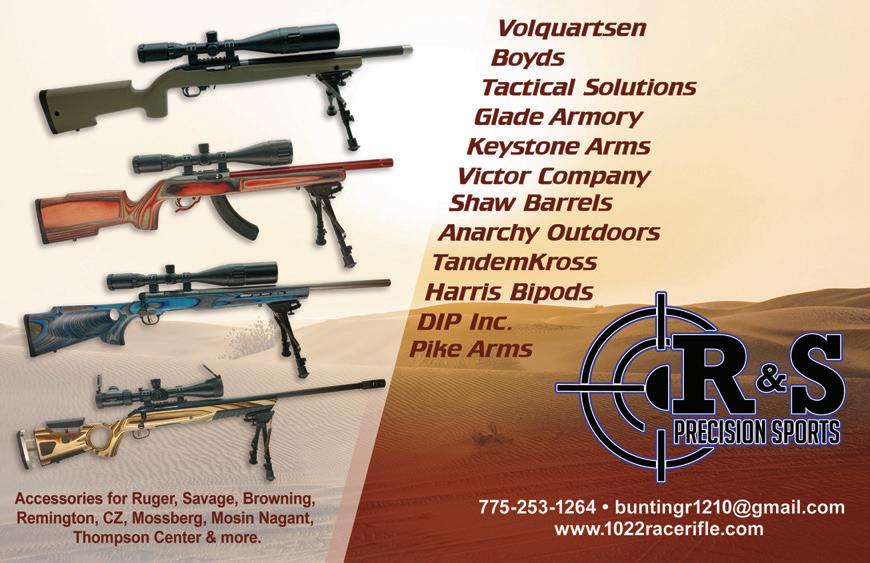



October








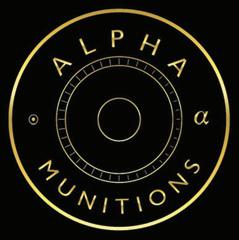





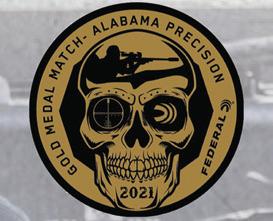




 PHOTOS BY CHRIS ROUNDS
PHOTOS BY CHRIS ROUNDS
Chris Rounds recently marked the first anniversary of his involvement in the Precision Rifle Series by – how else? – shooting in a match in Rocky Mount, Virginia. In September, he came in 14th out of 75 shooters at the VPRC Rifleman’s Revival to claim his best finish yet in a Pro Series competition.

Rounds is a longtime hunter, having

gone on whitetail and turkey treks with his father and brother from a young age, but he is relatively new to the long-range shooting game, and PRS in particular.



“I started shooting benchrest matches two years ago in the tactical class, shooting a .300 Win. Mag. at 1,000 yards and shooting a few mile matches,” he explains. “I wanted to get into something a little more

challenging, so I expressed interest in PRS and a good friend of mine that most people know, Patrick Youngs, helped me transition into PRS and I haven’t looked back since!”
Since his initial foray into competition, Rounds has shot in a number of Atlantic regional matches, as well as pro-level national matches. As a new competitor, there were bound
Chris Rounds isn’t looking back after moving from benchrest shooting to the Precision Rifle Series.“The industry is full of so many great people who are here to help anyone that wants to get into the industry,” says Rounds. He also credits his wife for supporting his participation in the sport.
to be some hiccups along the way, but he is gaining steam quickly.
“This year has had its ups and downs, especially being new to PRS, but I did manage to get a third-place finish at a regional match a few weeks ago,” he says. “What made that special is it was the first place I shot my first-ever PRS match almost a year prior.”
And with the recent 14th place finish in Rocky Mount, Rounds is becoming a force to be reckoned with in the PRS world.
Who does he credit for his success?
There are two answers to that question: his wife and his fellow competitors.
“I have an amazing wife that lets me travel the country doing what I love – shooting a lot of matches – while managing four of our beautiful kids at home!” he enthuses.
As far as his shooting peers, Rounds says, “The industry is full of so many great people who are here to help anyone that wants to get into the industry.”
Editor’s note: For more information on the Precision Rifle Series, visit precisionrifleseries.com.
Rounds comes from a hunting background, having chased whitetails and turkeys from a young age with his dad and brother.





• MPA Matrix Pro Chassis chambered in 6mm Dasher
• Impact Precision action
• TriggerTech Diamond trigger
• Bartlein barrel
• Nightforce Optics ATACR scope

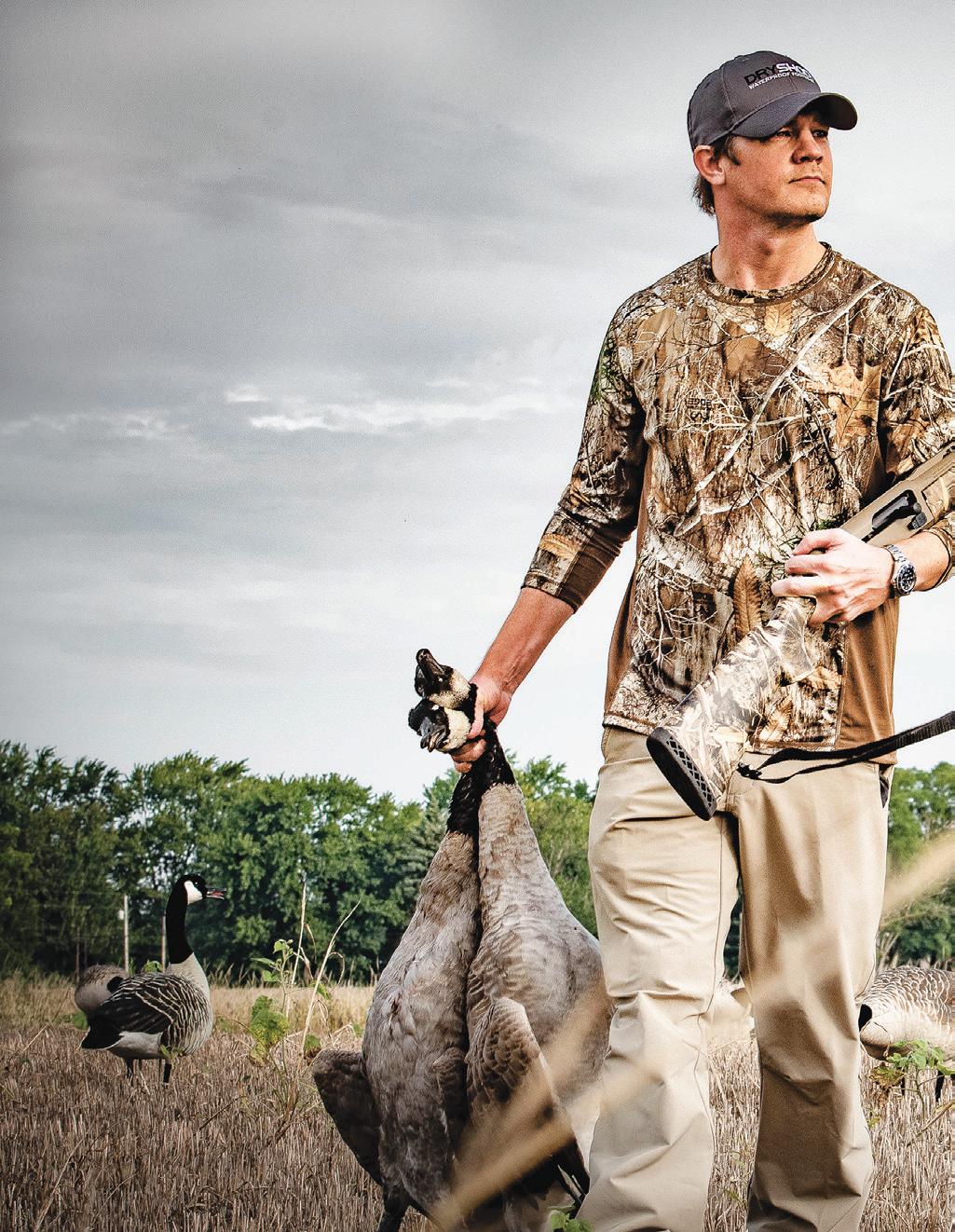
Soaked to the skin and watching the rain, I can’t help but think about the three rain jackets I left in the truck this morning. Our party is crouched in a brushy drainage ditch with water about midcalf in depth. This level would change as the day wore on and, no, it didn’t go down. Still, with water running down my back and dripping off the bill of my hat, I am happy. It is early goose season in northern Ohio and things are about to get lively.
I’m here with, among others, Keith Heinlein, product manager with Stoeger Industries; Christian Hogg, director of marketing and new product development at Fiocchi Ammunition; and Jim McConville, a national sales manager for the Outdoor Sportsman Group.
Jim is a mountain of a man who is well known in this area and the outdoor industry. He played college football for Ohio State and is an avid sportsman. If Jim is not pursuing waterfowl, he may be found hunting those big Ohio whitetails or fishing on Lake Erie.
But right now Jim’s working his goose call with gusto and it seems to be working. Peering out from under my soggy hat brim, I see a string of about a dozen honkers turn and plow their way toward us through the fog and rain.
Adam Trawick, an editor with Sporting Classics magazine, brings in a pair of honkers during an early-season hunt in northern Ohio.


“They’re comin’!” someone hisses. “Stay down!” This seems obvious, but we all obey.
Now the geese are close and you can hear the soft goose chatter in the flock. The tension of the eight or so gunners in our waterlogged blind is thick and you can almost hear it crackle like static electricity up and down the ditch. Hold, I tell myself, wait for the call from the guide to stand and shoot.
“Take ’em!” yells Brayden Cole. We rise as one, the Stoeger shotguns roar and geese fall from the heavy September sky. This, I mumble to no one in particular, is goose huntin’!
The Canada goose situation here in northern Ohio, like many places east of the Big Muddy, is something of a quandary. While everyone wants more waterfowl, resident geese – that is, geese that seem to stay in the same area and do not migrate – can soon wear out their welcome.
The Canada goose population in Ohio, and specifically around the shores of Lake Erie, has been an increasing problem since the 1960s. If these geese find enough food, water and roosting places in the area, they are likely to never leave; they will nest and raise new geese every year, and the population continues to grow.
The sudden increase in their population has led to issues such as degraded water quality, agricultural damage and property damage.

According to The Ohio State University College of Food, Agricultural, and Environmental Sciences, hunting is the single best strategy for eliminating the problems caused by these geese while still allowing for a healthy, controlled population. That was what we were here for that September day – to experience the early-season goose hunt and maybe whittle down the numbers of geese.

As I have said many times before, no shotgun gets the level of use and abuse as one that’s used for duck and goose hunting. Rain, snow, mud, ice and Labrador retriever

Case inspects a goose decoy while holding a Stoeger M3500, an inertia- rather than gas-powered shotgun. He managed to dunk it in a ditch, but despite pouring a “few cups of water” out of it, it worked as good as before.

slobber are what this shotgun has to endure. Being dunked in dirty water or being used for a boat paddle are also in the realm of possibility. (I dropped the M3500 I was using in the aforementioned ditch; I opened the action, unloaded, and poured a few cups of water out of it before reloading and continuing to fire the shotgun.)
The M3500 Stoeger shotgun has been around a few years and has a well-established reputation as a workhorse. The M3500 is an inertiapowered semiautomatic shotgun, which means it can go a long time without cleaning (unlike many gaspowered guns) and will stand up to the abuse that a duck and goose hunter will dish out. The actual number of rounds fired without cleaning, reported to me by some shooters I know, is astounding – I am talking about in the thousands of rounds. Since returning home from this trip, I have put a M3500 Waterfowl model through the wringer and experienced no problems.

The first thing a shotgun (or any firearm) has to do is go bang when you pull the trigger. In the case of a semiauto shotgun, it needs to go bang every time – whether in rapid succession or slow, and with any kind



“With a muzzle velocity of 1,450 feet per second, it is a screamer and these shells performed well,” says the author of Fiocchi’s Golden Waterfowl Bismuth 3-inch shotshells loaded with 13/8 ounces of No. 4 shot.Charlie Pukett, director of sales and marketing for Flambeau Outdoors.

of ammo, be it 2¾-inch low-brass, lower-powered shotshells or the most nuclear-powered 3½-inch ammo you can find.
I like to use several different types of ammo for these tests and load them randomly; for example, some tame 2¾-inch field or target loads may be followed by a 3½-inch turkey or waterfowl load. The M3500 handled them all with no malfunctions. As I have noted before, a 3½-inch magnum load following a 2¾-inch trap load will certainly get your attention.
As for the shotgun’s oversize controls, bolt release and bolt handle, they are all very handy – especially with gloves – as is the contoured loading port for easy loading.
The Stoeger M3500 Waterfowl model has a 28-inch barrel. The receiver and barrel are finished in Cerakote flat earth (practically indestructible) and the stock and forearm are Realtree Max-5 camo. This shotgun shoots 2¾-, 3- and 3½-inch shells; has a recoil reducer inserted in the stock; includes shims to adjust drop and cast on the stock; and ships with three chokes and a paracord sling.

Maybe best of all, the M3500 won’t break your bank. MSRP is $849.00. For more, see stoegerindustries.com.

You duck and goose hunters know that the ammo you use is as important as the shotgun. Fiocchi ammunition makes a wide array of shotgun shells (as well as pistol, centerfire and rimfire ammo), and on this trip we used the Fiocchi Golden Waterfowl Bismuth shotshells. Waterfowlers know that bismuth shot is much denser than steel – about 24 percent more – and is also nontoxic, meeting federal requirements. In a nutshell, bismuth has better terminal performance (it kills cleaner) and is not as expensive as the next step up the pellet material ladder, which would be tungsten.
The Fiocchi Golden Waterfowl Bismuth loads we used were 12-gauge, 3-inchers with 1⅜ ounces of No. 4 shot. With a muzzle velocity of 1,450 feet per second, it is a screamer and these shells performed well. I watched other members of the party crumple geese at

the outer limits of shotgun range.
If you are unfamiliar with Fiocchi ammo (fiocchiusa.com), you may want to check up on them a bit. You may be surprised to learn that Fiocchi has been making ammunition right here in America, in Ozark, Missouri, since the 1980s, and now has an additional plant in Little Rock, Arkansas.
Editor’s note: Larry Case has been a devoted outdoorsman since he was a child. He will admit to an addiction to turkey hunting (spring and fall), but refuses any treatment. He enjoys the company of gobblers and cur dogs that are loud and people who speak the truth softly. Case served 36 years as a game warden in West Virginia and retired with the rank of district captain. You can check out his podcast and other stories at gunsandcornbred.com.







 STORY AND PHOTOS BY SCOTT HAUGEN
STORY AND PHOTOS BY SCOTT HAUGEN
For two seasons, my hunting buddy Chris Stewart targeted a specific blacktail buck. When a text came through on opening morning that said, “Got it!” I knew he’d connected.
“I totally misjudged it!” was Stewart’s reply to my congratulating him. When I caught up with him from where I was hunting, the 154-inch rack left me speechless. It was an absolute giant buck, the kind you hunt a lifetime for. But it didn’t come easy.
“It was less than 200 yards from where I’d been watching it all summer, and less than 100 yards from where I saw it one time last season but couldn’t get a shot,” he shared. Stewart is one of the most successful blacktail hunters I know, and he and his family have taken many big bucks in October, as have a number of devoted blacktail hunters who’ve taken the time to study and really try to figure out these elusive deer.
Stewart put two full summers into scouting this buck. It was over an hour’s drive from his home, one way. He also passed up other bucks he could have shot while searching for this buck during the first season he hunted it. Stewart didn’t luck into this prized
Expert who regards ghostlike West Coast species as North America’s ‘most challenging deer to hunt’ breaks down how to find bucks during October’s prerut and rut.A common sight during the blacktail prerut in early October, when bucks sniff where does have urinated, along with tracks they’ve left behind.
buck; he put in the time and effort, and it paid off.
Having hunted big game throughout the West for more than four decades, I rank consistently tagging a mature Columbia blacktail buck to be the most challenging of all. On top of that, I think October is the toughest time to kill a mature blacktail. Part of this is due to the many habitats these deer call home. Then there’s how these deer live within their respective habitats. And it’s also partly because of the number of archery and upland
bird hunters in the woods during all of September – even August, if you include scouting.
No matter where you hunt blacktails, the October prerut and the peak of the rut, which starts later in the month, are important to understand. The moment a buck strips its velvet in late August or early September, testosterone levels begin to increase, meaning the prerut has begun. During this time you’ll see big bucks start to let smaller bucks move well ahead of them when going to feed and bed. You’ll also see mature bucks use different trails than younger bucks.

A mature buck’s number one goal in early fall is to stay alive by avoiding predators and eating nutritious foods. In early to mid-October, the movement of a mature buck is largely restricted to its core area; that’s why summer scouting is invaluable. A buck’s core area is where it beds during the day, and it’s usually surrounded by brush with multiple escape routes. Core areas can hold food, too. In semiopen habitats, bucks sometimes bed on a vantage point and they’ll often utilize multiple beds, depending on thermal shifts and wind direction.
During the first two weeks of October, a blacktail buck tries to eat as much quality food as possible to build fat reserves for the upcoming rut. The rut is when a buck’s second goal in life kicks in, which is to simply perpetuate the species. The first half of October is roughly when you want to spend more time glassing than walking. If summer scouting reveals a couple good bucks in an area, glass all day long, sometimes for days in a row, scouring the land.
Glassing from a distant vantage point is wise because a buck’s movements are very nocturnal in early October. However, if they find themselves near a good food source come daylight, they might bed right in it and stay there much of the day, if not all day. I’ve spotted many bucks that most folks drove by without even looking for them. If the sun comes out, it will often expose bedded bucks, which makes them easier to locate, so stick with it.
Blackberry patches, tall grass, stands of fireweed and even Scotch broom thickets are ideal habitats to glass for bucks. In addition to offering food, these habitats provide cover, and bucks often bed in them all day. Search the edges of areas burned by forest fires, too.
In mid-October, things start to happen in the blacktail woods. Personal experience leads me to believe that the blacktail rut starts sooner in the Coast Range than any other habitat. I’ve seen big, swollen-neck bucks


When glassing while on the move, look for parts of a deer, like a white throat patch, a glistening moist nose, the horizontal line of a back or belly, or the flicker of an ear or tail. Old bucks bed in cover, meaning you’re looking for parts of them, not the whole animal.

chasing does as early as October 14, and have inspected empty stomachs of rut-crazed bucks between October 15 and 20. An empty stomach indicates a buck has quit feeding and is focused on finding does, and this means breeding takes priority over eating.
October 15 through 22 is what I consider the peak of the prerut. This is when mature bucks cover ground searching for does they’ll soon breed with and bucks they’ll soon fight for breeding rights. Focus hunting efforts on horizontal ridges, places does must pass through from their elevated bedding areas to low-elevation feeding zones. Bucks check primary doe trails running up and down ridges – often multiple times a day – to see if a doe slips into estrus. Bucks can cover a lot of ground when maintaining the same elevation, as can hunters.
A buck is searching for where does have urinated, and it will smell it to sense estrogen levels. Once a buck finds what it likes, it will follow the doe’s tracks to her, hoping for a chance to breed. Specifically, a buck follows the scent left by the doe’s every step, identifying odors laid down from the interdigital glands. These glands are located between the split toes of two-
toed ungulates, and are one way they identify each other. The brushier a blacktail’s habitat, the more I believe they rely on these pheromones to identify and track one another.
I speculate that the slightest spike in estrogen levels results in a more intense prerut and an earlier rut timing in the jungle-like Coast Range. Next comes the Cascade foothills, where bucks in the 1,000- to 2,500-foot elevation range really grow active by October 22. Mature bucks living on the valley floor are the toughest to find, even during the pre- and peak-rut periods, as they live year-round with the does they’ll breed with and the bucks they’ll fight, meaning they don’t have to travel to discover what’s happening.



While the first two weeks of the month find me glassing a lot for bucks, between October 15 and 21 is when I’ll start covering ground on foot. I wait for heavy rains to fall, as this makes the going quiet and helps knock down my scent. My goal is to find bucks on the move and locate as many does as I can. When does are located, plot their location on a map, as you’ll return to these places in order to find bucks on the move, sometimes
When it comes to blacktails, studying them from a distance will teach volumes, and this is achieved through patiently glassing for hours – sometimes days – on end.
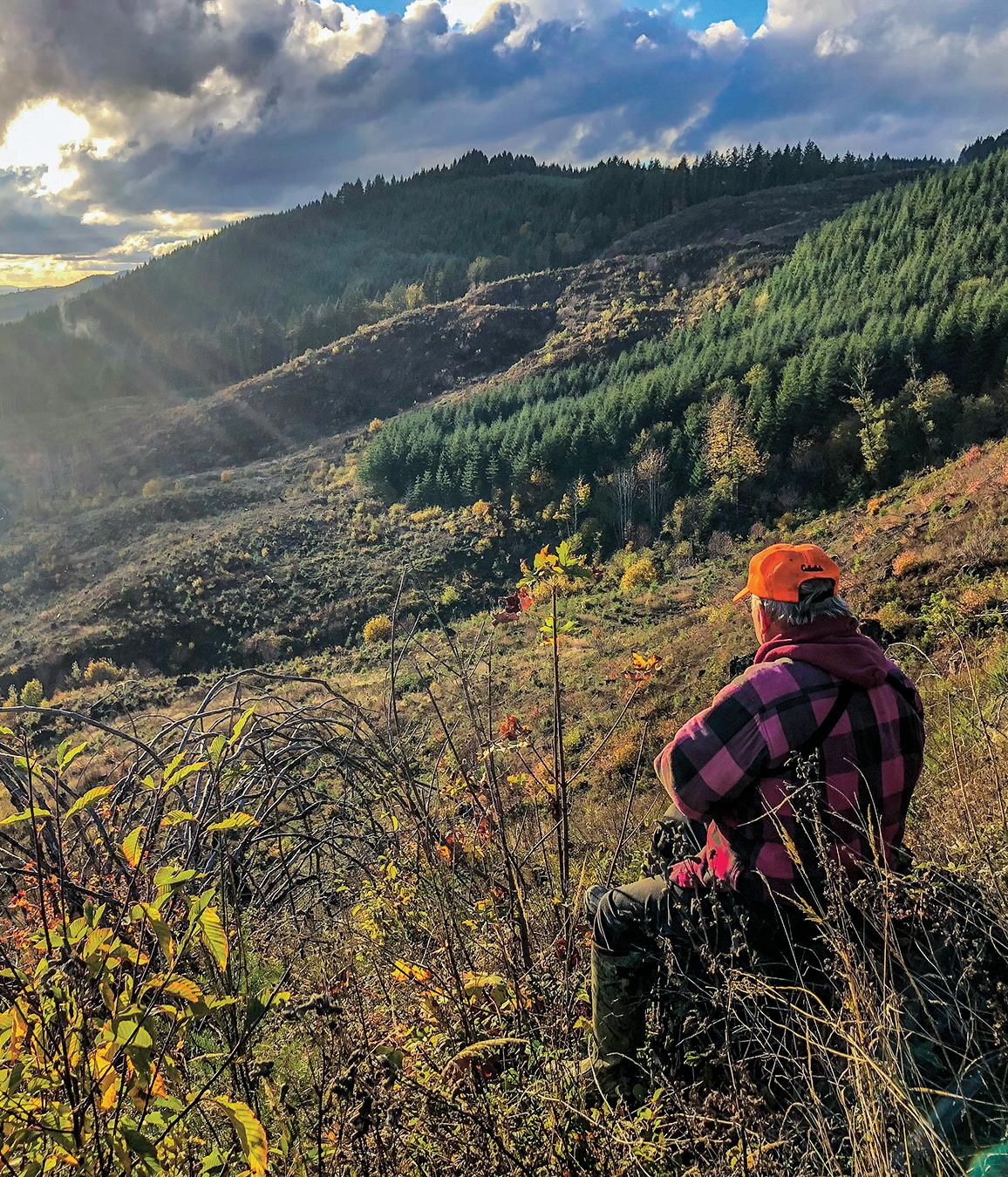
Blacktail deer occupy a diverse set of habitats, which makes learning to hunt them extremely challenging. Author Scott Haugen was elated over this Cascade blacktail taken in October.

multiple times a day.
On October 22, things change. This is when I start rattling and calling because this is when bucks get aggressive. I don’t think as much ground is covered by bucks over the next week, as they’ve found what they’re looking for. Now they’re waiting for does to come into heat, and to fight bucks for breeding rights. The latter means that simulating fighting sounds can give you an advantage.
Halloween is when I’ve seen the most and biggest bucks during the general rifle season. From now until season’s end, anything can happen. I’ll often rattle from multiple setups at this time,

especially if the weather is miserable.
The harder it rains and the colder it is, the better for big buck movement.
While photoperiodism dictates hormone levels, cooler temperatures make it more comfortable for a buck to cover ground. On wet, windy, cold days, hunt all day long. Hunting before and after a windstorm is wise. Prior to a storm, as the barometric pressure begins to drop, deer feed more. After a storm they’ll do the same, looking for mosses and lichens that fell from trees, foods they’ve not had for months. During a storm they often hold tight.
No matter what part of October you like to hunt most, pay attention to
the deer and watch how their behavior changes. Devote time to glassing the first half of the month, and don’t be afraid to hit the brush the second half.
When it comes to trophy blacktails, there are no written rules as to what will happen, when. But one thing is for sure. Every time you hit the blacktail woods, you’ll learn something, just as I continue doing after a lifetime of passionately pursuing these, the most challenging deer to hunt in all of North America.
Editor’s note: To order Scott Haugen’s bestselling book, Trophy Blacktails: The Science of the Hunt, visit scotthaugen .com. Follow Scott on Instagram.

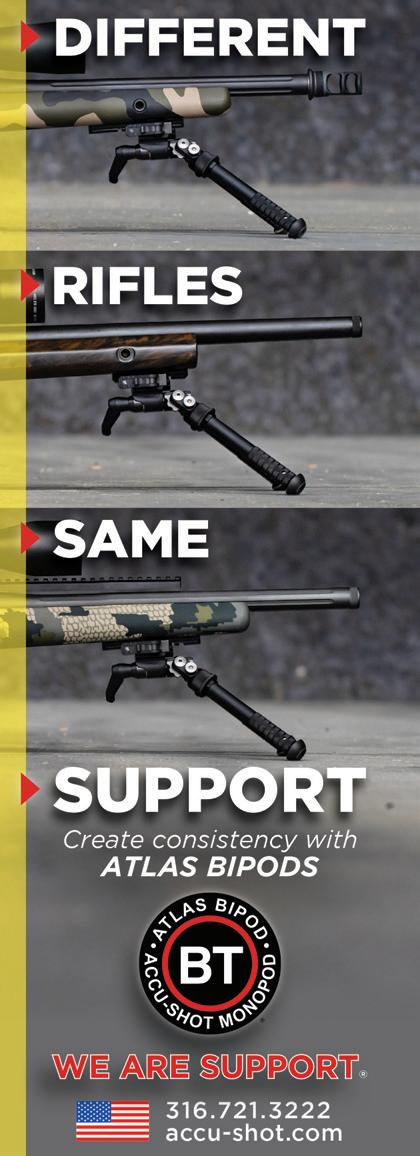
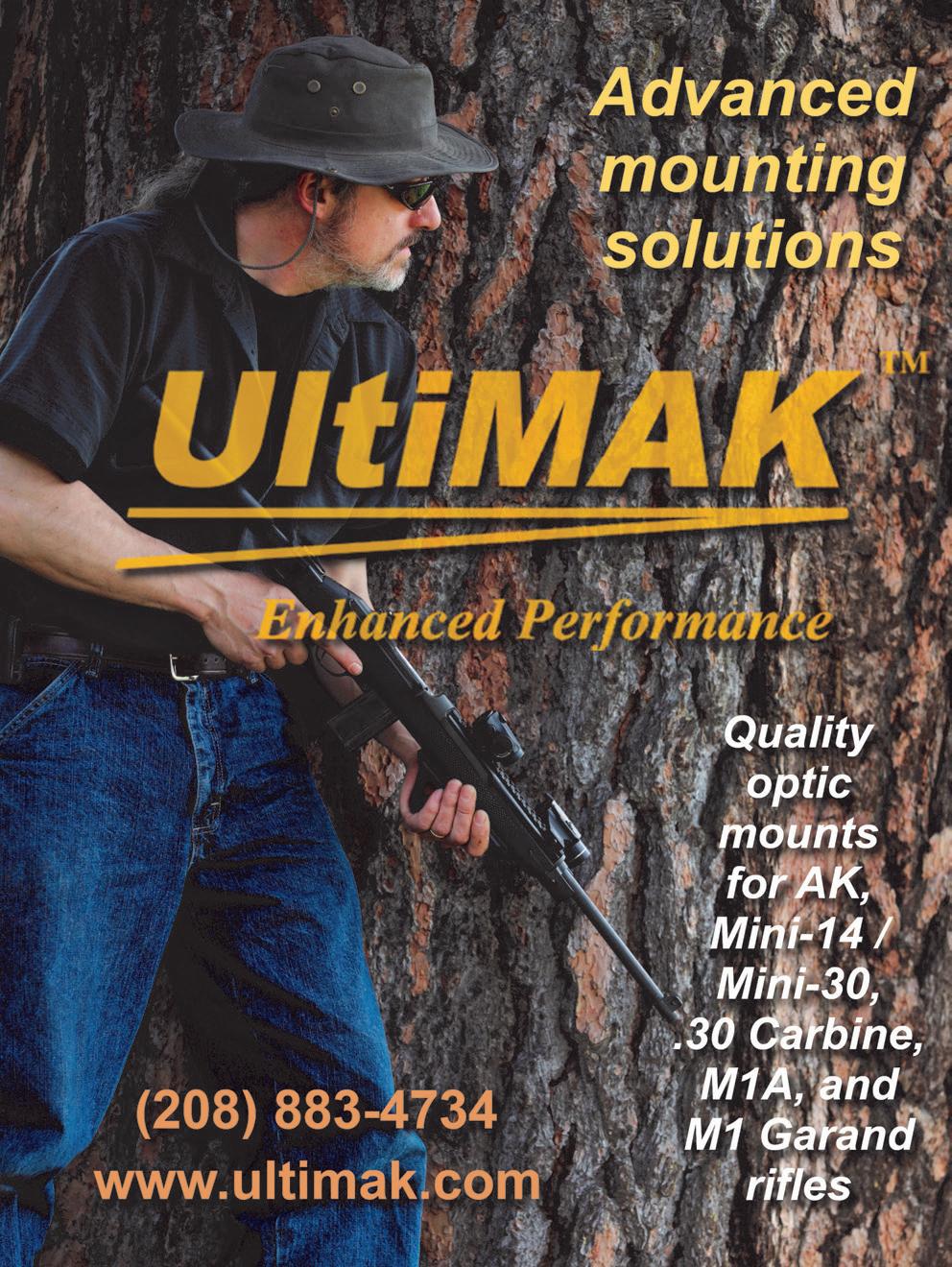
The Ultra-Light Bino Harness is a fully adjustable one-size-fits-all system combining light shock chord and heavy-duty plastic connectors to keep your binoculars front and center while you’re on the hunt.

The Ultra-Light Bino Harness from Rick Young Outdoors keeps your field glasses readily accessible.

Binoculars and range finders are a must for every hunter, but they also need to be accessible when the time comes to spot game or range their distance. In years past, I just used the straps that came with the binoculars, but the straps often rubbed on my neck and would give
me a headache by the end of the trip. I would put my range finder in a pocket, but then it was never easy to get to and I often only used it when it was convenient, which defeated its purpose.
The Ultra-Light Bino Harness from Oregon’s Rick Young Outdoors (rickyoungoutdoors.com) is a product
that every backcountry hunter must have. Not only is it extremely light –weighing about as much as your boot laces – it also keeps your binoculars secured to your chest (and the weight off your neck). The system also allows for an attachment with which you can keep your range finder handy.
The harness is a fully adjustable
The harness cord comes in four color options: olive drab green, black, hunter orange or pink.


Regular binocular straps can chafe your neck or you might have to tuck your binos under a coat or vest to keep them from swinging around. But this harness and its cords and connection points help keep your field glasses close to your body and readily accessible.

one-size-fits-all system made from light shock chord with molded heavy-duty plastic connectors. It has easy sliders to pull the chords taut or readjust if you need to make the harness larger. You can wear the harness four different ways: around the neck, as a shoulder harness, as a side pull or as a side saddle. Each way will keep your binoculars and rangefinder within easy reach and secure to your body.
The system also has accessories to keep your binoculars or rangefinder from getting scratched at the connectors, as well as an accessory to attach binocular covers to protect the lenses. The quick-release hardware lets you take off your binoculars with a simple push on the connector. It even comes with a built-in signal whistle, which is great to get your hunting partner’s attention or use as a survival signaling device.



You will not find a lighter or more secure harness than the well-designed Ultra-Light Bino Harness from Rick Young Outdoors. The harness has an MSRP of $24.95 and comes in four colors. The best part is they are made in the USA.










Terry Rodakowski poses with his 9-year-old full-curl ram, a prime Stone sheep specimen. “The wait was tough but well worth the final outcome,” he says of two years of Covid delays that served to ripen the anticipation and adventure all the more.
 STORY BY TROY RODAKOWSKI PHOTOS BY TERRY RODAKOWSKI
STORY BY TROY RODAKOWSKI PHOTOS BY TERRY RODAKOWSKI
This year, my father, Terry Rodakowski, celebrated his 71st birthday in March, his 50th wedding anniversary in July, and bagged his Stone ram in August, putting him just a couple sheep shy of his Grand Slam.
“I’d like to get my slam done by the time I’m 80,” says Rodakowski. He has gotten a bit of a late start on his goal, since he didn’t begin hunting wild sheep until he was in his mid-60s. However, he is in fantastic shape for his age and plans to keep it that way for as long as possible.
TRAVELING TO CANADA in pursuit of the beautiful Stone sheep, he was excited to make the trek by plane, boat and horse. Needless to say, these sheep are found in remote areas that take a good amount of travel time and sore muscles. Both Rodakowski’s guide and wrangler were in their early 20s with a few good years of experience under their belts. The two-plus-year wait due to Covid restrictions made the anticipation for this hunt even greater for Rodakowski. “The wait was tough but well worth the final outcome,” he says.
As someone who’s made similar hunting trips, I can say that you find yourself relishing every moment, from the plane to the river and riding the horses. Sore muscles are the norm on these expeditions. Hunts like these may look glamorous, but to be honest, they are a lot of work for all involved.
Stone sheep range from the northern Rocky Mountains and the Skeena region of British Columbia to Alaska and the Yukon. Around 85 percent of all the Stone sheep in the

A long-awaited trip to the remote mountains of far northern British Columbia yields a memorable full-curl sheep for an Oregon hunter.
world are found in BC; however, the population seems to be decreasing in parts of the province and therefore population and habitat management are of utmost importance. Some factors that are limiting Stone sheep populations include predators like wolves, coyotes, wolverines and grizzly bears, and other ungulates that compete for forage. Regarding predators, recommendations have been made to increase hunting seasons on wolverines and grizzlies where they prey on sheep. Research on lambing to reduce predation by eagles has also been implemented in recent years.



FOR THE HUNT, Rodakowski had a 6.5 PRC built by In-Rut Rifle Company from South Dakota. His boomstick was loaded with Berger 156-grain EOL VLD bullets from Choice Ammo in Victor, Montana. After months of practice with his rifle, Rodakowski was proficient from long range out to 1,000 yards. Of course, glassing sheep and getting as close as possible was top priority. Field judging a good ram through a spotting scope would be easier from a few hundred yards. Unfortunately, the weather was foggy and cool, which made glassing very tough from long distances across the green canyons of upper British Columbia and Northwest Territories.


Rodakowski steadies himself for the shot he had waited for. He used a custom-built rifle chambered in 6.5 PRC and a Berger 156-grain EOL VLD bullet to make the 555-yard shot.

This would be Rodakowski’s third sheep and second towards his North American Grand Slam. The plan was to travel to the small town of Whitehorse, the capital of the Yukon Territory in northern Canada, where he’d board a small-engine bush plane and fly to a base camp, then boat upriver for a day on horseback to reach hunting country. There, they would set up a mobile spike camp.
On opening morning, the hunter

and his guide climbed to a vantage point where they were able to find a group of rams feeding in a small hillside basin. These sheep live in some of the most rugged country in North America and getting close is not always an option. As they got their spotting scopes out to take a look, a dense bank of fog, mist and drizzle settled in, reducing visibility to near zero. Finding a mature ram is not always easy, but the hunters had
time to wait out the thick blanket of fog and organize their gear.
Older – meaning 8-, 9-, 10-plusyear-old – rams are the least likely to survive the winter, so in order to harvest the individuals that will least impact the herd, the hunters should target these more mature rams because “technically” they are going to die within the next year or two anyway. If a ram is 10-plus, there is a good chance he’s on his last legs
and likely not breeding anymore, instead sitting back and watching the drama of the rut unfold, conserving his energy for the long winter ahead, and taking the limited feed from the young up-and-comers.
Close analysis of the sheep is important when hunting to determine the age and quality of the ram. Hence, using good glass is very important and almost a necessity for most hunters. With the spotters set, it was now

time to wait and see what would be unveiled once the fog lifted.
for several hours, the fog began to break, revealing several sheep across the canyon. Some of them were bedded and others were already up feeding. Rodakowski and his guide began to take their time and look them over closely. There were three full-curl legal rams in the group, with one in particular
standing out to both of them.
Like a couple of snakes, the two slithered across the mountainside, trying to get as close as possible for a potential shot. The rangefinder said they were at 555 yards, and it looked as if they would not be able to get much closer due to the terrain. The wind had picked up a bit too, which made things even more challenging. Now all the hunter had to do was wait for the ram to stand and stretch. His Zeiss V6



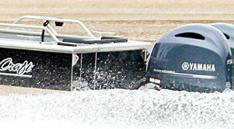





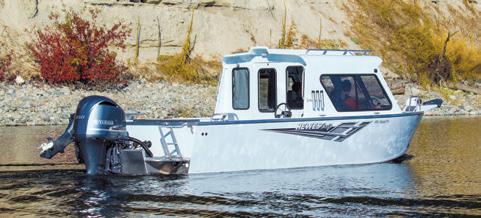












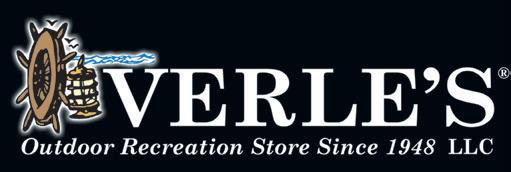
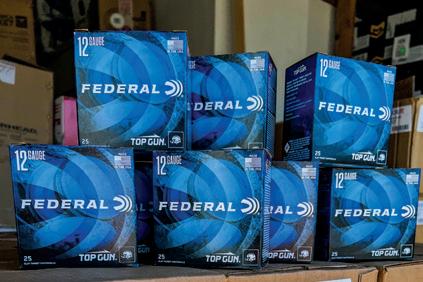



3-18x50 scope was dialed for windage and ready to rock and roll.
The setting was beautiful, like a high-dollar painting, as the sun began to peak from behind the rolling fog, revealing those sheep. “Simply unforgettable,” says Rodakowski, describing a moment in time carved into his memory forever.

Finally, the ram stood up to stretch and it was time for the hunter to
make his shot. Rodakowski took a deep breath, held it, steadied his rifle’s crosshairs and gently squeezed the trigger. The report from the shot echoed throughout the canyon walls like thunder. The mature ram took the 156-grain Berger through the chest and staggered, falling to the ground and rolling a couple hundred feet down the slope. A gigantic sigh of relief and deep breath were
taken before all of the high fives and celebration. The work to preserve the meat and get it off the mountain was now first priority and the thought of fresh backstraps over the fire was very energizing.
Sore muscles and tired feet were a welcome feeling for this hunter who spent a lifetime waiting for this single moment to fulfill his dream of a backcountry Stone sheep.
















Late August in Kentucky’s Land Between the Lakes –that patch of ground between the confluence of the dammed sections of the Tennessee and Cumberland Rivers – is a special time of year, for it is when squirrel season opens.
Hunting squirrels is a classic American experience, and across the generations it has been a rite of passage for young
hunters, as well as a bona fide source of protein for impoverished families. As a youth, I was privileged to hunt with some folks who grew up during the Depression, when life on a farm was difficult enough to begin with, let alone when coupled with the financial inability to keep any of the animals that were raised for money to keep the farm afloat, and a near-complete lack of deer to be hunted for meat.
I remember David Miller, a local farmer who was like a second father to my dad, telling me that he’d be up

at first light before school every day in the fall to try and collect at least a couple of squirrels for the family’s dinner. This was hunting out of absolute necessity, and it translated into a fall tradition. My very first game animal taken was a gray squirrel, just a few days after my 14th birthday. Having saved up the entire summer for a Fox Model B-SE .410-bore side-byside shotgun, hunting squirrels would make an indelible mark on my youth, carrying over into adulthood.
When I was invited to travel to


CCI’s Standard Velocity .22 LR ammunition remains among their top-selling products. It is very consistent and has many practical applications.

Kentucky to participate in the squirrel opener, along with several other colleagues, I immediately accepted; unlike so many of the deer and other big game hunts we are often invited to attend, this was completely different. We were encouraged to bring whatever rifle and/or shotgun we liked, and to try some different types of CCI ammunition. While this hunt was already a means of reconnecting with my youth – many fall weekends were spent chasing rabbits and squirrels with my father and maternal grandfather – it also got me thinking about the different types of cartridges and ammunition available to those who seriously pursue the “limb rats.”
August is warm almost anywhere in the northern hemisphere, and Kentucky is no exception. When it’s hot and humid, gray and fox squirrels can be found in the tops of hickory trees –both pignut and shagbark – as well as

feasting on acorns and pine cones alike. In spite of the plentiful vegetation, shots can actually be on the long side, as some of those trees approach 100 feet tall and you might have to back off in order to obtain the shot.
While a shotgun is certainly an effective tool, spitting pellets back onto your dinner plate is no fun at all, so a rimfire and head shots (as often as is possible) is the course of action for me. And I find that the three most popular rimfires – the .22 Long Rifle, the .22 Winchester Magnum Rimfire and the .17 Hornady Magnum Rimfire – are the three best choices for the job. CCI offers some fantastic ammo for all three, and I’ve picked my personal favorites for each of them.
Starting with the .22 Long Rifle, we have the oldest and most popular rimfire cartridge of all time. It has


Author Phil Massaro was more than pleased with this five-shot 50-yard group from CCI’s Clean-22 ammunition.


been with us since the mid-1880s, and has been the darling of small game hunters and target shooters alike. CCI offers many different loads for the .22 LR, with the most popular being the Standard Velocity load. Using a standard 40-grain roundnose lead bullet at a muzzle velocity of 1,070 feet per second, this apparently hohum load works just fine on squirrels.
It certainly doesn’t require a ton of energy to kill a squirrel, but you do need to be able to put the bullet on target, especially when it is just a squirrel’s head poking out from behind a limb. The lead bullets are known to foul a barrel faster than a jacketed bullet, but this simple and timeless design still works perfectly.
If that fouling bothers you, look no

further than CCI’s Clean-22 line. The rifle I took to Kentucky – a Savage Mark II BRJ topped with a Leupold VX-3HD 4.5-14x40 – absolutely loves the 40-grain polymer-coated Clean-22 (the red-coated model at 1,235 fps), putting five rounds into a group under ½-inch at 50 yards. If you like to get a bit closer, or are in a situation where you want to keep noise to a minimum, the blue-coated Clean-22 runs subsonic at 1,070 fps, and will cut down your cleaning chores considerably.
If you really want quiet, grab a box of CCI’s Quiet-22 Semi-Auto. Using a 45-grain lead roundnose bullet at the sedate muzzle velocity of 835 fps, this is great for closer shots, yet has the power to cycle the autoloaders. I’ve long relied upon this very quiet load for dispatching garden pests and numerous red squirrels, which will eat holes in the soffits of the barn and make an absolute mess of things.
CCI has long been famous for its Stinger ammo; using a slightly longer cartridge case, yet maintaining the
A red squirrel can be a destructive beast, getting into sheds and barns and wreaking havoc. CCI Clean-22 Subsonic sorted this one out.


same overall length as a standard .22 LR, the 32-grain bullet leaves the barrel at 1,640 fps. My dad always preferred these in his Bicentennial Ruger 10/22, and that rifle still shoots them very well. If you take longer shots at squirrels, the Stinger will check that box for you. Though they offer a flatter trajectory, they do hit harder and can
The CCI Stinger has long been a favorite of the author’s dad, who appreciates the higher velocity and flatter trajectory.

destroy meat on body shots, so keep to the head shots.
Of all of CCI’s .22 LR loads, I really like the classic MiniMag load; this uses a 36-grain jacketed hollowpoint at a velocity of 1,260 fps and is hell on squirrels. I have found it to be wonderfully accurate, making it a sound choice for longer head shots, and the jacketed construction won’t foul your barrel as quickly as the lead bullets will. It was this load that I chose for the Kentucky squirrel adventure, and it served me very well. Whether it is an early-season squirrel hunt with plenty of vegetation, or a late-winter jaunt through the bare woods, I can always count on CCI MiniMag ammo.
The .22 Mag – as it is commonly known – offers an increased case capacity and correlative higher velocity. If the MiniMag represents a great choice

for the .22 LR, the MaxiMag delivers for the .22 WMR. Pushing a 40-grain jacketed hollowpoint to a muzzle velocity of 1,875 fps, the MaxiMag is enough for foxes and coyotes, let alone squirrels. The increase of 600 fps or so will really show up if you try for body shots on squirrels, destroying what little meat there is to begin with; with the .22 Mag, it should be head shots only. I like the MaxiMag .22 WMR for the varmint hunter who occasionally hunts squirrels. There is also an FMJ variant of this load, which will certainly be effective for head shots, yet will be less destructive.
If you like instantaneous hydraulic shock and the ability to turn the light switch off immediately, look to the 30-grain Hornady V-Max bullet at 2,200 fps. The high velocity and polymer tip add up to explosive performance, and the results of a head shot can be rather gruesome, though


CCI’s MaxiMag for the .22 WMR is the bigger brother of the MiniMag for the .22 LR; it is a great choice for hunters.

Massaro used the Federal Custom Shop .410 TSS ½-ounce load to take this gray squirrel way up in a pine tree.

Just for fun, J.J. Reich of Vista Outdoor (the parent company of CCI and Federal Premium) had the Federal Custom Shop whip up a custom .410 TSS load. Using ½ ounce of No. 9 TSS shot at 1,400 feet per second, this combo certainly would “reach out and touch someone.” The pattern from the Rossi shotgun stayed really tight, and the Aimpoint red dot sight helped to put the pattern where it needed to be. Are these shells an affordable option? Probably not, but it sure was fun to experiment with modern shot technology in the squirrel woods.
extremely effective.

In 2002, Hornady – working with both Marlin and Ruger – released the .17 Hornady Magnum Rimfire, or the .17 HMR, as it has come to be known.
Created by necking down the .22 WMR to hold bullets of 0.172-inch diameter, this little speed demon has become quite popular over the last two decades.
Will Brantley, our host and guide on our Kentucky squirrel adventure, uses his CZ rifle in .17 HMR to very good effect; the man has the patience of a saint when he knows there’s a gray squirrel “cuttin’ hickories” in a treetop. The cartridge’s precision, flat trajectory and striking power combine to allow Brantley to take a squirrel in the top of the tallest pine or hickory.
CCI’s Gamepoint 20-grain jacketed softpoint will handle the muzzle velocity of 2,375 fps, yet when it hits, it hits with authority. You’ll know when you’ve connected on a head shot, as the resounding “whunk” of the squirrel hitting the ground will be heard within seconds. If the damage caused by the expanding softpoint is a bit much for you, look to the 20-grain FMJ load; it will print very close to the same point of impact, yet the non-

Reptilia has quickly become an industry standard since their relatively recent inception. While the company has only been around since October of 2017, it is an organization that has over 15 years’ experience in the firearms industry. Having worked in product design, manufacturing and business development for some of the top brands in the firearms industry such as Magpul, Radian Weapons, SilencerCo, Crye Precision, and others, the team knows its customer base and strives to deliver products that are reliable, effective and driven by end user needs. Having already released a number of leading-edge scope mounts, grips and light housings for various platforms, they show unrelenting quality standards, and continue to evolve their brand by designing innovative and high-quality parts trusted by the experts that use them.


expanding projectile won’t make as much of a mess.
Grab a box of whatever rimfire cartridge tickles your fancy and reconnect with your youth by heading to the squirrel woods. You just might be surprised by how wily the little buggers can be, and you can take your revenge for all the times a gray squirrel sounded like that trophy buck you were waiting
The .17 Hornady Magnum Rimfire, a necked-down variant of the .22 WMR.


CCI’s V-Max load for the .22 Mag is both accurate and explosive, though it might be a bit on the heavy side for gray squirrels.
The CCI Gamepoint 20-grain load for the .17 HMR was the chosen load of Massaro’s “squirrel guide” and buddy Will Brantley; he’s deadly with his CZ rifle.
If the frangible bullets for the .17 HMR don’t do it for you, there is a correlative FMJ load that is the same shape and weight as the Gamepoint.


for. I know I found myself smiling as I used my dad’s and grandpa’s old trick of hanging your jacket on the far side of the tree to get the squirrel to come around the other side and offer a shot. Just like riding a bicycle.



While working his mall security side gig, Houston sergeant tackles man armed with ARstyle rifle, handgun, possibly preventing a mass shooting.
STORY BY NICK PERNA PHOTO COURTESY OF ABC 13 NEWS/HOUSTONAs a sworn police officer, you are never truly off-duty. Once you take the oath and strap on a badge and gun, you become a 24/7/365 protector.
You don’t have to be working a shift at your department to be considered “on-duty.” Many officers supplement their income by doing pay jobs. These are security or traffic details where a private entity pays the officer to work for them. A lot of cops have side hustles working at sporting events, night clubs and other venues. No one likes doing them, but you gotta do what you gotta do to make ends meet.
EARLIER THIS YEAR, Sergeant Kendrick Simpo of the Houston Police Department was working a second job as a security guard at the Texas city’s Galleria Mall. He received a call about a man armed with a rifle, roaming around a department store. On this particular day, the mall was hosting a girls’ dance

competition. This meant there would be many vulnerable, defenseless targets for a psychopath to go after.
Sgt. Simpo had some serious issues to consider. He knew he had to stop the threat, but in a way that wouldn’t cause collateral injuries or result in mass panic.
Sgt. Simpo had a handgun on him, but he decided not to use it. He opted for an open-field tackle instead.

He located the suspect, Guido Herrera, just 10 feet away from the dance competition. He closed the distance and took the suspect to the ground.
“I quickly bum-rushed, tackled him,” he told reporters. “And my first reaction was to make sure that I get a hold of the rifle. No matter what I grabbed, make sure I grabbed that rifle. I had in my mind (that) I was going to get shot. I just had to bear the pain, I knew it was going to hurt, and I was like, ‘Whatever I do, I cannot let go of this rifle.’”
Fortunately, Sgt. Simpo didn’t get shot. He was able to hold the suspect down and maintain control of the rifle until backup arrived and took him into custody. In addition to the AR-type
rifle, the suspect had 120 rounds on him, as well as a handgun.
Herrera was charged with a misdemeanor weapons possession offense. Six weeks later, he was arrested again after showing up at the Houston FBI Office and demanding to speak with the director of the agency. A gun was located in Herrera’s car.
Herrera was sentenced to six months in jail for the mall incident and while some would say he got off easy, to be charged with a more serious crime would have required him to shoot an innocent person. He never got the chance, as Sgt. Simpo got to him first.
Editor’s note: Author Nick Perna is a sergeant with the Redwood City Police Department in northern California. He previously served as a paratrooper in the US Army and is a veteran of Operation Iraqi Freedom. He also has a master’s degree from the University of San Francisco. He is a frequent contributor to multiple print and online forums on topics related to law enforcement, firearms, tactics and veterans issues.

For women serious about learning how to better protect themselves, Sherry Myers, a self-defense instructor and NRA-certified instructor, advocates “hard, realistic training, not some feel-good program based on wishful thinking.”
As of the timing of this article, news has broken that Eliza Fletcher – a 34-yearold mother, wife and kindergarten teacher – was found murdered after being abducted while jogging. She was
shown on video putting up a struggle for four minutes before ultimately being overpowered and put into the vehicle. Although Fletcher was physically fit, she was smaller than her attacker, who was around 6 feet tall and weighed roughly 175 pounds. The alleged murderer also has a long history of violence; he previously served 20 years of a 24-year
sentence for kidnapping another victim at gunpoint, and his past criminal record shows he had charges for aggravated assault and rape.
While I have been in the selfdefense business for over four decades and am a certified rape prevention instructor trainer – as well as a father and grandfather of grown women
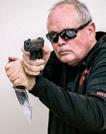

Given the typical size advantage men have over women, Myers eschews martial arts training. Instead, she suggests focusing on learning how to wield one of two deadly weapons. In the case of a knife, the chest, face, arm and throat of an attacker represent different points to target when defending one’s life with a blade.
– for this article, I thought I would go to a newer source of advice for today’s woman: Sherry Myers, a self-defense instructor with Assault Counter Tactics, and the owner of Shooting with Sherry (shootingwithsherry.com). Sherry does not come from a military or law enforcement background, but she was taught firearms safety, shooting and hunting at a very early age. By the time she was 14, she’d embark on her own into the woods with her .22-caliber rifle, eradicating rodents and bringing home small game for food for the family. (Sherry delighted in pretending she was her childhood hero Annie Oakley.)




As Sherry grew and matured, she would graduate from her .22 to shotguns, and then to rifles to hunt bigger game. Along her journey, her father imparted a story when he thought she was of age to understand the seriousness of the situation. Before Sherry was born, her father shot a suspected serial rapist. This had a huge impact on Sherry’s outlook on firearms being utilized not just for hunting, but also for personal self-defense.
Sherry then attended classes from some of the top firearms trainers in the country, people like Massad Ayoob, who is becoming a certified instructor in both the NRA and the USCCA, and she has also become an understudy to some of the best knife-counter-knife instructors. Though Sherry earned her bachelor’s degree in prelaw, she ultimately decided to become a full-time self-defense trainer.
So, without further ado, here are Sherry Myers’ thoughts on women’s self-defense issues, drawn from various interviews I have done with her.
SHERRY MYERS: “AS a woman who teaches, financially runs and owns a company that specializes in training women (and men/couples) in adversary survival training, women often ask me, What is the most practical way for a woman to protect herself? This is usually followed by another question: What is the most realistic method of self-defense, or what is the best martial art or weapons to defend yourself with?
Since I am presented with these

Myers illustrates using a simple pencil for self-defense, a tactic that can be taught to and used by any woman, young or old.




questions, I respond by asking them one question of my own. How serious are you? And what kind of protection training are you truly talking about?
Generally, when it comes to training women, I eliminate most martial arts that teach hand-to-hand because the facts are, men are usually stronger, faster, taller, and outweigh most women by 25 or more pounds. Too many styles or systems state that they have the answer to render
a man helpless or incapacitated, but there is a 50-50 chance at best of this succeeding, and that statistic is way too high in my opinion.
The first thing a woman needs to do is win the mindset confrontation. Period. A woman must accept the fact that in a violent encounter she may be badly injured, but she must be willing to put into her mind that she must be willing to survive the confrontation at all costs.
Women are like soldiers. We fight better when things go our way. When things don’t go our way, it’s hard for us to reassert control. The only way to ensure control and to make good as survivalists is through hard, realistic training, not some feel-good program based on wishful thinking.
On hand-to-hand programs for women, the majority of them were designed by men. The problem with







programs like model mugging and RAD-type [Rape Aggression Defense] programs is the attacker is both posturing and wolfing before he attacks the female victim student. First, in real-life situations, a woman is usually attacked without warning and as we have already mentioned, men tend to be stronger, heavier and more aggressive, and they automatically expect women to be little or no problem to overpower them.
Men are also tactical-minded and have played some variation of war all their life. They are good at it. For a


woman to take command of an intense situation against a man, she must use superior force. This equates to using weapons that are capable of inflicting serious injury or death on the attacker. There just is no other simple solution to this problem.

To accomplish this, the objective is to obtain the proper tools, or safety rescue equipment, if you prefer. The tools of choice that I recommend are a knife and/ or a gun. Each tool comes with its pros and cons and requires special training and a complete understanding of the legal issues and consequences of having such tools.
Let’s start with the pocket folding knife, made popular by the knife manufacturers who made knives easy to open either through a hole, stud or blade
for quicker opening presentation, and a clip on the side, which attaches through a pocket or other special areas where women might want to hide a knife.
I feel the knife should be used as a last resort. While male self-defense trainers hail the knife as a practical method of self-defense, I do not share their enthusiasm. First, is it legal to carry? If it’s not, it’s not an option. Second, is the knife large enough to handle under conditions of extreme stress? To have one on your person is one thing; to get it out and open the blade under extreme duress is another, period. Third, do you truly have the fortitude to use a knife under duress? In extreme-close-contact confrontations, impaling a human being is a most difficult one ... I am not saying under the
duress of circumstances this cannot be accomplished, but it’s simply not as easy as some would have you believe.
If a woman decides to buy a knife, here are my recommendations:
• The blade length should be no longer than 4 inches.
• The blade should have a plain edge on it only.
• The blade style should be a clip point.
• The knife should have a strong locking mechanism.

• The knife should be able to have a clip, which allows for either left- or right-hand carry.
• The knife should be comfortable to hold onto.
• The knife should be reasonably priced, under the $125 mark.

Check online to see if a knife is even permissible to carry in your area. While serrated and partially serrated blades, as well as tanto and spear points, are popular with many knife aficionados, I don’t recommend them for self-defense. A prosecutor would have a field day with those types of knives.

One of my favorite knives to carry is Benchmade Mel Pardue 555-S30v mini Griptilian; it has an axis opening lock that is both strong and fast to open.
The knife’s role is limited at best. Still, it is a better option than nothing at all.
The first option for women as an equalizer is a firearm. I know there are
a lot of women who hate guns. I don’t understand this mentality, because if these women ever had a chance to interview as many women as I have –women who were brutalized by their attackers – then they would understand the handgun’s potential value.
In firearms training, I recommend two types of training courses. First and foremost, a basic course that covers safe handling, safe storage, marksmanship, the difference between revolvers and semiautomatic, maintenance, and legal issues. The second course should be a realistic approach to using firearms under stress. Too many
firearm programs spend too much time simulating law enforcement and military-type training programs, teaching their students to engage when they should be retreating.
I believe students should participate in a shoot-don’t-shoot role-play scenario where the assailant has the potential of shooting back at you. This can be done using airsoft or simulation and training programs. At the same time, the student is taught the proper use of cover, dealing with multiple assailants, weakhand shooting techniques, reloading the weapon, how to hold a suspect until police arrived, et cetera, all under simulated stress.
The handguns I recommend for women are the Glock 43X and Sig P365. I find women prefer these firearms to any other. When it comes to caliber, I recommend 9mm for recoil control and the wide variety of defense rounds to choose from.
Tragically, I have met too many women who have been attacked and had the sensation of total disbelief that their lives were flashing before their eyes as if there were in some sort of movie. Those women all describe thoughts of, This can’t be real and I don’t belong here, while fighting feelings of anger and betrayal, only to be reminded that the horror and blood were all too real. I believe one can only prepare for lifethreatening encounters by training that realistically simulates the same type of scenario as close as possible. This brings me back to the original question. How serious are you about self-protection?”
THIS ARTICLE IS dedicated to every woman who survived a violent encounter and our prayers to the families of any women who did not.
For more information on training with Sherry Myers, email her at shootingwithsherry@instructor.net
Editor’s note: For realistic self-defense training, see assaultcountertactics .com. Author Paul Pawela is a nationally recognized firearms and self-defense expert based in Florida.

“I believe one can only prepare for life-threatening encounters by training that realistically simulates the same type of scenario as close as possible. This brings me back to the original question. How serious are you about self-protection?” Myers asks fellow women.
The Covert Carrier is designed for “deep” cover or “backup” use. It was created for small-framed single-stack semiautomatic handguns. Caliber options for the Covert Carrier range from .45 to .22. It can be fitted to a removable grip panel or adapted to the handle of a polymer pistol and fitted with our universal small or large rubber sleeve.


The key element to the device is the stainless steel appendage fastening means, or clip. The clip is designed in a lazy “S” shape. A segment is draped over the user’s waistband material and the handgun then disappears –IWB — from view, behind the cloth below the belt line.

The Covert Carrier gives the user an option to carry appendix fashion, with total handgun concealment without a traditional holster, case or pouch. Covert Carrier’s “Grab and Go” feature is the strongest in the concealed carry industry. There is no cloth, elastic, leather or plastic to wear out or break.
Covert Carrier has both right- and left-handed applications and custom options for wooden, plastic and G10 grip panels. The device is adaptable to a handgun’s removable grip panel, and once affixed to it, becomes a permanent part of the grip.

and
Other carry options include pocket, purse or boot; however, when used inside the waistband and carried below the beltline, it becomes the gold standard for concealed carry.
Visit www.covertcarrier.com for more information. Orders can be placed online or made via telephone at (702) 245-6302.


Most concealed carriers and armed defenders have imagined the types of circumstances where they might need to use deadly force in self-defense. Far fewer gun owners, however, have made a serious effort to understand what to expect in the immediate aftermath of a self-defense shooting. How do you know when the threat is over? What’s the best way to handle the 911 call? What should you do while you wait for first responders to arrive? How should you interact with

Experts advise that in the case of self-defense, get to a nearby safe place and immediately call 911. (SHUTTERSTOCK)
law enforcement officers?
In a recent podcast series, I spoke with Don West and Steve Moses about these topics. Don West is a criminal defense attorney and national trial counsel for CCW Safe; Steve Moses is a CCW Safe contributor and a firearms instructor. Over coming issues, we’ll explore each of the questions detailed above, but the foremost concern for an armed defender in the immediate aftermath of a self-defense shooting is making sure the threat is over, and that they – and those they are responsible for protecting – are safe.

Steve Moses says, “Sometimes we’re under the misperception that if
we shoot somebody, the fight’s over.” He reminds us, however, that most people who are shot (with handguns, particularly) survive. While an attacker struck in the central nervous system (like the upper spine or brain) is almost always immediately incapacitated, an attacker struck in the heart or major artery may be able to take action, at least for a few moments. Those shot in less vital areas will likely retain most of their physical abilities and could continue their attack.
When shot, an attacker will either flee, fall or continue the fight. What follows are some real-life examples of defenders who responded well to each
Once you’ve stopped an attack, here’s what an attorney and firearms instructors say to do – and not to. AFTER A SELF-DEFENSE SHOOTING
of these scenarios.
Melinda Herman was home during the day with her children when an intruder broke through her front door with a crowbar. Herman ultimately shot the intruder five times in the face and neck with a .38 revolver. None of the shots proved fatal, nor were they immediately incapacitating, but they were persuasive in convincing the intruder to flee. Herman took her children to safety next door where she waited for first responders to arrive.
Zach Peters also encountered midday intruders after they smashed through a door. However, unlike Herman, Peters was armed with an AR15-style rifle. He fired at the intruders and then retreated to the relative safety of his room where he barricaded himself in and called 911. He could hear that at least one of the intruders was still alive and still in his home, so he waited for the police response.
CCW Safe member Stephen

Maddox suffered three attacks at the hands of an old friend while attending a motorcycle rally. Twice, Maddox escaped his attacker, but during the third encounter, the attacker wrestled him to the ground. It took five shots from a .45 revolver to weaken the attacker enough for Maddox to extract himself from the fight. None of the shots proved immediately fatal, and the attacker was still alive when Stephen retreated around a corner and contacted 911. Stephen has given CCW Safe specific permission to discuss the details of his case.
In each case, the defender was able to stop the attack with their firearm, but the attacker wasn’t immediately incapacitated. Police found Melinda Herman’s attacker alive but unconscious after he crashed his truck into a tree. The intruders Zach Peters encountered soon died from their injuries, but one struggled for several minutes before succumbing to his
wounds. None of the individual shots Stephen Maddox fired proved fatal, but altogether they caused his attacker to eventually expire from loss of blood.
Because none of these intruders were fully incapacitated immediately upon being shot, each still potentially posed a continued threat. Wisely, none of the defenders opted to continue the fight. Had Herman chased the intruder out of the house and gunned him down in the yard, authorities might have viewed her case differently. Had Peters “finished off” the intruders by shooting them while they lay prone on his kitchen floor, his act of selfdefense could have been transformed into murder. Had Maddox shot his attacker after extracting himself from his clutches, he might have been convicted at trial rather than being granted an acquittal.
Instead of pursuing or executing their wounded attackers, Herman, Peters and Maddox retreated to
the nearest place of relative safety and waited for first responders.
From a legal perspective, we encourage defenders not to leave the scene of a self-defense shooting. West, the attorney, says, “The reason you don’t want to leave the scene is that, if you’re charged with a crime, the prosecutor may ask the jury to infer some consciousness of guilt because you fled.” He stresses that the legal considerations are obviously secondary to the immediate safety concerns; a defender who can articulate the nature of the threat and how they sought safety can mitigate any “consciousness of guilt” implications. Moses, the firearms instructor, notes that a defender facing multiple attackers may have to flee farther from the scene to find safety, and that is perfectly acceptable, provided the defender immediately calls 911.
The lesson for concealed carriers and armed home defenders is that once you’ve been able to stop an attack, and especially if the attacker is not completely incapacitated, it is imperative to get yourself and your loved ones to the nearest place of relative safety and call 911.

Editor’s note: Shawn Vincent is a litigation consultant who helps select juries in self-defense cases, and he manages public interest of high-profile legal matters. Mr. Vincent is also a regular contributor to CCW Safe’s news and podcasts.

Tap Rack Holsters is a leading provider of premium American-made gun holsters and knife sheaths. Our products are the result of 40 plus years of combined experience in the military and law enforcement field using American made materials. Every Tap Rack holster and sheath is handcrafted using extreme care, precision and built to last because we’re dedicated to providing premium quality products our customers can rely on.

FULLY FUNCTIONAL
WARRANTY CUSTOM BUILDS
FOR EXTREME USE MADE IN AMERICA
BUILT WITH AMERICAN MATERIALS AND PARTS MADE BY AMERICANS AND VETERANS
vlineind.com
new in-wall Tactical Closet Vault is finished in a rugged flat black powder coating and is outfitted with an all-steel MOLLE board on the door. The vault has been specifically designed to conveniently store and organize tactical gear. The three-point locking system with the Simplex quick-access push-button lock provides superior security on the corners of the door. The lock does not require batteries and will always be at the ready. It provides a unique and space-conscious way to secure firearms and your tactical gear, such as magazine clips, ammo pouches, flashlights and optional mounts for your home-defense weapons and other items, with the convenience of quick access. The door and frame protrude less than 2 inches from the wall, allowing it to be concealed behind a door or in a closet.




set.
HD 3000 laser rangefinder gives you the tools to act quickly


confidently, with a 3,000-yard max range and a stunning HD optical system that lets you pinpoint big game faster at distance. Four target modes and two ranging modes mean you get the flexibility to range any shot on any hunt, making the Viper HD 3000 perfect for the treestand
the mountains.
alumagrips.com
Limited quantity, $23.50 per set, available on the Specials page only –www.alumagrips.com/specials.
AGrip! is the revolutionary new custom-fit, wrap-around, nonslip tactical grip that works even better with wet and especially sweaty hands, and is made exclusively by Brooks Tactical Systems. AGrip! is super easy on the hands, is nonabrasive, and incredibly durable. This “multipurpose hybrid material” was created to be nonslip even with hot, sweaty, dirty hands, or with cold, wet hands underwater. AGrip! even works with oil on your hands!
B br AG cu sl be sw ex Sy on an “m w w w te on
Custom-designed three grooves, clear type II anodized finish, tangless ambi-safety relief (pocket on backside can be machined upon request). thick. quired.)
The CovertCarrier is designed for “deep” cover or “back-up” use. It was created for small-framed single-stack semiautomatic handguns. Caliber options for the Covert Carrier range from .45 to .22. It can be fitted to a removable grip panel or adapted to the handle of a polymer pistol and fitted with our Universal Small or Large Rubber Sleeve.



bullardleather.com
Bullard Leather uses premium Hermann Oak Leather to handcraft all their leather holsters, carry belts, wallets and knife sheaths. All products are handmade, and holsters are molded and boned to the gun for a snug, firm fit. Bullard Leather has an array of products, colors and exotic skins. Pictured is the Defender Holster for a Taurus Judge Magnum with .44, .45 and .410 bullet loops. Stop by Bullard Leather’s location in Cooper, Texas, or visit their online store.
For gun owners who prefer a dedicated crossdraw-style carry, Triple K introduces the #671 Crossdraw Concealed Carry Holster. Open top allows for easy draw and a leather stiffener assures easy reholstering. Adjustable tension screw ensures proper gun retention.

Available for a variety of revolvers and semiautomatic pistols. Fits waist belts up to 1 3/4 inches wide. Tan with plain finish.


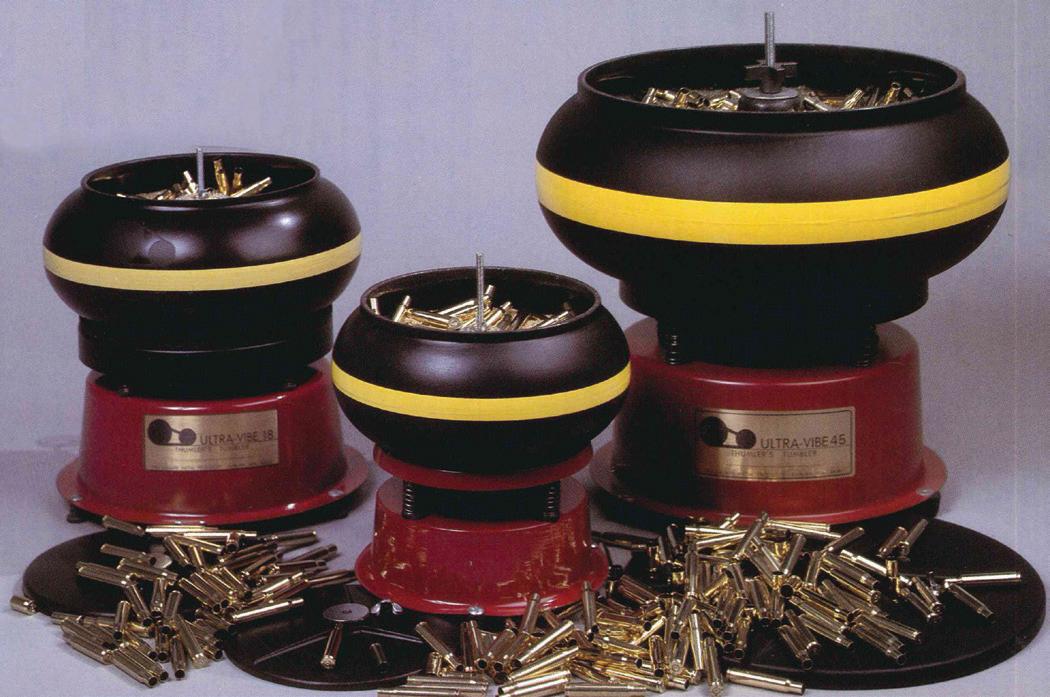


hatchoutwest.com
The most versatile all-in-one bipods on the mar ket that meet the high expectations of all types of shooters.

• Patented leg design locks in any position when setting up
• Incredible height range
• Two lengths:
TactaLoad is a new company providing quality aftermarket ac cessories. The Flash-5 is a unique shotgun stock incorporating an internal magazine that offers the shooter instant access to five additional rounds of ammunition. The Flash-5 protects your spare ammunition and feeds them out the bot tom of the stock fast!
shellshocktech.com

If you loved Shell Shock’s lightweight 9mm cases, try our .380 ACP cases. More calibers coming soon. Lighter than brass, more powder capacity, greater consistency between rounds, and can be picked up with a mag net. Reduces ammunition weight and increases performance. Made in the USA. Shell Shock…Shoot it, Love it!

After more than two years of develop ment and testing, Reptilia is proud to announce the Recc·E Stock for AR-15/ M16- and AR-10/SR-25-pattern rifles. Designed at the request of a military end user, the Recc·E Stock features a constant cheek weld, ambidextrous QD sling attachment points, rubber buttpad, and a modular design that allows usage of a standard AR-15 carbine buffer system, or A5/SR-25 carbine buffer system by replacing the receiver exten sion (buffer tube) and forward portion of the stock. Weighing only 12.0 ounces including the proprietary AR-15-length receiver extension, the Recc·E stock is the ideal lightweight solution for the entire spectrum of AR-pattern guns, from compact to precision.
The initial preproduction run of AR-15-length Recc·E stocks will be extremely limited and available exclu sively through RSR Group for dealers, and direct to consumers at the above website. MSRP: $159.95.
egwguns.com
Our Savage Axis Picatinny scope mounts are the best option when you are looking for the most versatile base. Our scope bases feature a multi-slot design that allows you to quickly and easily mount your scope rings anywhere along the base. Our Picatinny bases are proudly machined in the USA.



Redding engineers have developed a unique concentricity gauge, which uses the science of ergonomic design to im prove overall precision and ease of use.

The single-point contact-bearing surfaces are placed at an angle and made of hardened stainless steel, creating an ergo nomic positioning of the case and improving the ease of motion turning the case by making the action far more natural.
The new Slant Bed Concentricity Gauge features a large and easy-to-read dial indicator that quickly mounts in a factory-aligned base dead-on the centerline of the case.

The Lyman Ultimate Reloading System is the only kit you’ll ever need! Outfit an entire reloading bench with premium products designed to accomplish all steps in the reloading process. No other kit from any competitor can match this untouchable value! The Ultimate Reloading System includes top-of-the-line tools and accessories like our All American 8 turret press, Gen 6 Digital Powder System, Universal Case Trimmer, Pro 1200 Turbo Tumbler, and everything else needed to turn out high-quality rounds fast! Take your passion to the next level with the Lyman Ultimate Reloading System!
Present Arms is a veteran-owned small business that manufactures professional firearm tools and workstations. We offer quality and affordable products to service and build firearms.

Whether a sportsman, armor er or military, our solutions are cost-effective, armorer-approved, field-tested and built to meet the needs of sportsmen and professionals everywhere.
Black Hills Ammunition’s 10mm HoneyBadger has deep flutes designed for optimum terminal perfor mance without reliance on hollow points. The bullet penetrates deeply, cutting through bone and mus cle to get to vitals. This is important when relying on your handgun for protec tion, including the possibil ity of bear attack. This is a solid choice for defense!


Even Santa would love to see a bottle of PrOlix in his stocking this holiday season! There is no product on the market to date that works like PrOlix; just see their ad in this publication and learn more over at their website! Let PrOlix make it a joyful holiday!




The Advantage Plus dries and deodorizes all types of footwear in one to four hours. The Advantage Plus is fan-assisted, dries two pairs of shoes at once and is compatible with all Peet DryPorts. Assembled in the
thebuffalowoolco.com
This is the big boy – these are our heavi est, most insulating, most wicking socks, and most likely the warmest sock on the planet (excepting electric).
Ultrasoft bison fiber blended with fine merino wool means there is no prickly itch from these socks.

Will keep your feet warm and dry all winter long.

Bobbie Weiner, owner of Camo Face Paint, is the No. 1 supplier to the US DOD for all branches of the government. Bobbie also supplies the hunting industry with the same made-in-the-USA camo face paint. Face paint washes off with soap and water, nontoxic, odorless, hypoallergenic and a five-year shelf life.
Back in 1977 when the company was in its infancy, October Country Muzzleloading was a hunting bag. One product. Today, the northern Idaho-based outfit offers a com plete and thorough line of muzzleloaders and muzzleloading accessories, including ramrods, Pushing Daisies patches, Blue Thunder solvent, Bumblin’ Bear Grease, quality leather shooting bags, powder horns and hand-forged shooting tools. All exceptional quality goods for the hunter, shooter, collector and history reenactor enthusiast. October Country features products specifically designed and manufactured for cowboy action and black powder cartridge shooters. October Country has new products that include PowerBelt Bullets, Birchwood Casey, Uncle Mike’s, Ballistol, Hoppe’s, Cash Manufacturing, Hornady, Lyman and RCBS muzzleloading and black powder cartridge ball and bullet molds, as well as Lee Bullet Molds, to name a few.

The Cat-2 Double Pistol case features a padded divider to separate the pistols and accessories. Its wrap-around zipper and lay-flat design allow for easy access. Also features a large external com partment with webbing for securing magazines and tools in the case. Available in tan and black.



Our sleeping bag cover is a great way to protect your sleeping bag and add a little warmth. You can even sleep under the stars on a starry night! Roll your sleeping bag, pillow and sleeping pad up and it’s a perfect bedroll to keep all your sleeping gear organized.

verles.com
The quality top-grain leather used in our shop for these suspenders is sourced here in the USA, as are all the other components. With three color options you are sure to please the men in your life. Add a Derringer pouch and you have a very unique gift to give or keep!

Verle’s has the Big Chief front- or top-load package for you. Smoking is made simple with the Big Chief, as all you have to do is plug it into a standard household outlet. Just place your food (after brining or preparation) on one of the five racks that sit over the top of the drip pan. The smoker’s capacity is a whopping 50 pounds of meat or fish!

ds of meat or fish! fiveeasy-slidechrome-platedgrills

Includes: smoker, five easy-slide chrome-plated grills, electric cord, drip pan, wood flavor pan, free bag of Smokehouse Alder Wood Chips, and recipe booklet. MSRP $134.99, including holiday special of four extra bags of smoking chips – a $20 value!

CAS of Argentina created “The Dragon.”
This Damascus steel wonder is just one example of the world-class custom knives found on exquisiteknives.com.

Some of the finest custom pieces ever made are in website owner Dave Ellis’s personal collection. Treat yourself today!

highadventureranch.com
High Adventure Ranch, the oldest big game hunting ranch in Missouri, was founded by Charles Puff in 1983. The ranch has over 30 big game species, with an estimated 2,000 animals. Our guides have over 70 years of experience. The ranch offers lodging, homecooked meals and full-service meat processing.











“Where were the other shooters?” wondered author Mike Nesbitt (second from left) following low attendance at an annual black powder shooting event in western Washington state that dates back to the 1980s. In years past, “well over 100” participants would have competed in some of the matches.
Long-standing black powder shooting match struggles to attract participants and may not return in 2023.
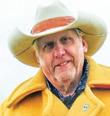 STORY AND PHOTOS BY MIKE NESBITT
STORY AND PHOTOS BY MIKE NESBITT
The 44th annual Gib Isaakson Memorial Black Powder Shoot, part of the Oregon Trail Days event in Tenino, Washington, was recently held in July. What makes this muzzleloading match so different is that it is held right in the city park amidst a weekendlong celebration. Unfortunately, this
year’s shoot might have been the last one. (More on this later.)
My memory isn’t specific enough to recall when I first went to this doin’s. Back then it was a huge gathering and I went there not to shoot but to do some shopping in the large traders’ area, where gunmakers and outfitters traded their goods either from tents or simply off of their blankets. That was the place to get materials and goods for the rest of the year, just like the summer
rendezvous was for the trappers who traded away the furs they had taken.
They had the shooting matches back then, too, but there were so many shooters, well over 100, that sometimes the matches were run in double relays. To put it simply, the annual gathering and shooting match at Tenino was something we didn’t want to miss.
IT MUST HAVE been the mid-1980s when I started shooting in these matches.

Will Ulry, a trader and competitor at Tenino, makes wooden chairs and trunks plus other goods, and for as long as I can remember he’s always put up one of his wooden chairs as a shooting prize for the aggregate. Taking that chair became a real tradition for the aggregate winner and I still have the chair I won there in 1997. My rifle shooting was pretty good in those days and I won a total of six chairs, taking first place each time, all before 2010. (Will donates chairs to several other events too, including Buffalo Camp.)
Another outstanding craftsman who offered very worthy items for prizes was Harold Moore, the wellremembered powder horn maker. Harold would donate three powder horns for the trade gun match for the
top three finishers.
It was in 2001 when I won my first Harold Moore powder horn; I used a Leonard Day swivel-breech flintlock that had one .54-caliber rifled barrel and one 28-gauge smoothbore barrel. That gun looks like an over/under but to change from one barrel to the other, the “catch” is depressed and the barrels are then turned to swivel the wanted barrel to the top. I still have that wellmade powder horn.
Harold donated powder horns for the trade gun match for a good number of years and those matches were most often filled with highly competitive shooters all trying their very best to be awarded such a fine prize. Later, after Harold could no longer make those powder horns, Steve Skillman stepped

in to carry on the tradition.
AT THIS YEAR’S Gib Isaakson Memorial Black Powder Shoot, the trade gun shooters were again competing for three of Steve’s buffalo powder horns. The trade gun match was the first event to be shot, early on Saturday morning. Tom Brown, the booshway of this doin’s as well as the match director and chief range safety officer, had the shooters assemble on the firing line for the shooters’ meeting – all four of us.
That was almost unbelievable. Where were the other shooters? The number of shooters had been declining over the past few years at the Tenino matches, but nothing like this. In his short address at the shooters’ meeting, Tom suggested that this would be the

Even the event’s marque competition, the Washington State Muzzleloaders Association’s Formal Rifle Match, only saw 13 shooters on the line. If there’s any hope for its future, when members of the public attending the concurrent Oregon Trail Days celebration were invited to try shooting a muzzleloader for $1 per shot, it proved “very popular.”



Nesbitt fires from the sitting position at a 90-yard target. In light of low participation at this year’s event, his club will now mull whether to even hold a 2023 edition. “The match is a very good one, but it needs shooters to support it. If this shoot is discontinued, it will be the end of an era,” he writes.
last of the shooting matches at Tenino. However, the final decision will not be made until the black powder planning meeting, which will be held by Capitol City Rifle & Pistol Club of the Olympia, Washington, area next month.

Then the shoot was on. The trade gun match uses a single target with two images on it; one is a moonshine jug and the other is a smiling quarter moon. We call it the “moonshine target.” Shooting begins at 40 yards with five shots. I took those five shots at the jug, a wider target than the quarter moon and hopefully easier to hit with the smoothbore, which has no rear sight. After all shooters had fired five shots from the 40-yard distance, we all moved forward to 25 yards for another five shots. That put 10 shots on the paper, or at least 10 tries, and with the range closed, we retrieved our targets. My trade gun target didn’t look too bad.
The load I used in my 20-gauge

Fowler had a .595-inch round ball patched with a .015-inch lubed patch over 60 grains of Schuetzen 3Fg powder. That’s a load I’ve used for several years and it always seems to work very well in the Fowlers and Northwest Trade Guns. Priming the flintlock, of course, was done with 4Fg from my priming flask.
FOR THE PISTOL match, which gained one more shooter for a total of five, I reverted back to a percussion gun, my favorite .50-caliber Hawken-style halfstock pistol with the single-set trigger. That “hand cannon” uses 35 grains of the 3Fg powder under a patched .490inch round ball; with that load, it is a very consistent shooting gun. My first shot hit just a little low of the bull’s-eye while I was using a 6 o’clock hold. Then my second shot, with the same hold, hit even lower. So I used a 12 o’clock hold, aiming at the top of the black, and
the other eight shots all hit very well, giving me a score in the 90s.
After that was the ladies’ match, but we had only one lady turn out. We made her shoot anyway. Guess what? She won!
The last match of the day had competitors shoot rifles at three novelty targets from just 25 yards. These included the candle, where you want to hit the flame but not the candle; the “Mike Fink” target, which shows a cup on top of a man’s head and you want to hit the cup as low as possible without touching the man; and the “V” target, where you want to place the bullet as low in the V as you can without touching the V. These are all paper targets and they can be tough because none of them have a bull’s-eye to aim at and you only get one shot per target.
Then, that afternoon, members of the public were invited to try a muzzleloading rifle, with the rifle

loaded by a volunteer, for $1 per shot. That was very popular this year and our two volunteers, Tom Witt and Derek Sotelo, were kept busy until they ran out of ammunition. The $1 per shot was donated to the club.
ON SUNDAY MORNING, the real shooting match began, with the first target at 90 yards. Here’s where I used my lightweight percussion Hawken-style rifle in .50-caliber. This portion of the match at Tenino was also the Formal Rifle Match of the Washington State Muzzleloaders Association. The number of shooters had risen to 13 for
the rifle match, still very low compared to the more than 100 that we used to enjoy. The rifle match was run in five relays, one relay per target, with those targets posted at 90, 75 and 50 yards, and then two targets at 25 yards. After each target was shot, the firing line moved closer to the targets.
Bob DeLisle was the big winner for the aggregate. He took first place in all five rifle matches with his TVM .40-caliber flintlock Leman, and he shot all targets offhand, although sitting and cross-sticks were allowed at the two longest distances.

The top three trade gun shooters
were each awarded the buffalo powder horns and I took first place there, as well as in the pistol match. The other prizes were provided by the Puget Sound Free Trappers. I was awarded fourth place in the aggregate, picking a new coffeepot from the prize table, and all shooters received a prize from that table in order of their aggregate score.
Now we must wait for the planning meeting to see if the shooting match in the city park at Tenino will be done again. The match is a very good one, but it needs shooters to support it. If this shoot is discontinued, it will be the end of an era.


